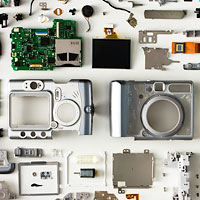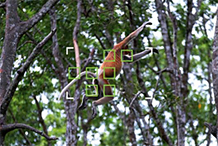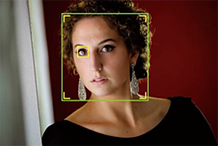Firmware Friday: Fuji X-T1 gets big AF improvements; Canon 7D II and Nikon P900 bugs are squashed
posted Friday, May 15, 2015 at 6:15 PM EST

With nothing new to report, Firmware Friday has been on hiatus for the last couple of weeks. Now, it returns in spectacular style with news of a huge update on the way for Fuji X-T1 owners, as well as updates for both the Canon 7D II and Nikon P900 also landing.
We'll start off with Canon and Nikon, given that their updates are already available for download. Firmware version 1.0.4 for the Canon EOS 7D Mark II brings five changes, according to the company, all of them aimed at squashing bugs. Issues in earlier firmware versions included autofocus problems with the EF 70-200mm f/2.8L IS II USM lens at around the 100mm focal length, and a conflict between anti-flicker shooting and the AI Servo AF mode, failure to apply a picture style in Custom Shooting modes. Two further issues said to have been vary rare included incorrect date and time recorded on the first image captured in live view mode, and excessive image noise when the Auto Lighting Optimizer function is enabled. All of these bugs are said to have been addressed in the new version 1.04 firmware, which you can find here.
Next up is firmware version 1.1 for the Nikon Coolpix P900, an ultrazoom camera with a spectacularly far-reaching 83x optical zoom lens. There are but two changes in this new firmware release, both of them relating to automatic switching between the viewfinder and LCD monitor with the camera's eye proximity sensor. In the original v1.0 firmware, the camera would sometimes lock up completely, or simply stop displaying or saving images properly after you brought the viewfinder to your eye, or when you lowered the camera to look at the LCD monitor. With firmware version 1.1 installed -- you can download it here -- neither problem should trouble you any more.
And finally, we come to the upcoming version 4.00 firmware update for the Fujifilm X-T1 and X-T1 Graphite Silver. And frankly, just that version number alone should tell you plenty about Fuji's commitment to after-sales service. It's not often that a manufacturer will provide a firmware update significant enough to merit an entirely new version number, let alone more than one of them. There's no question that this is a big update, though, just as was the version 3.00 update released last December.
So what's new in Fuji X-T1 version 4.00? There are a whole raft of changes, no less than 10 of them in total, as follows:
-
New AF System
-
New AF system with Zone and Wide/Tracking modes for effortless capture of moving subjects
The AF System complements the fast and accurate 49-single-point autofocus system with new Zone and Wide/Tracking modes, which use 77 autofocus points across a wider area to substantially improve the camera's ability to capture moving subjects.-

The Zone mode allows users to choose a 3x3, 5x3 or 5x5 zone from the 77-point AF area. When combined with the AF-C continuous focusing mode, the camera continues tracking a subject at the center of the selected zone. The 3x3 and 5x3 zones at the center, in particular, offer extra-fast focusing with the use of the built-in phase detection pixels.
-
In the Wide/Tracking mode, the camera displays the area in focus, identified automatically out of the 77-point AF area (Wide in the AF-S mode) and tracks the focus area's subject across the entire 77-point AF area (Tracking in the AF-C mode). This makes it possible to maintain focus on a subject that moves vertically, horizontally, and back and forth.
-
-
Improvement of AF accuracy
Single-point AF divides the focus area into smaller sections to more accurately determine the distance to the subject for even greater focusing accuracy. The built-in phase detection pixels have the detection range of 0.5EV, an improvement from the previous 2.5EV, delivering phase detection AF performance that enables fast focusing in low-light conditions and on low-contrast subjects. -

Eye Detection AF
The firmware update provides Fujifilm's Eye Detection AF, which automatically detects and focuses on human eyes. The function allows you to easily focus on the eyes even in difficult conditions, e.g. when shooting a portrait wide open to obtain a beautiful bokeh background. -
Auto Macro mode
The firmware update introduces the Auto Macro function, which automatically switches the camera into the Macro mode while maintaining the conventional AF speed. You no longer have to press the Macro button to initiate a close-up shot. This update eliminates the Macro function assigned to the Macro Button, allowing you to assign a different function to the button. -
AF improvement in the Movie mode
The optimized algorithm delivers a more natural and smooth AF action during movie recording.
-
-
Other improvements
-
Improved Shutter Speed Dial operation
When the Shutter Speed Dial is set to T and the Shutter Type to Mechanical + Electronic, you can use the command dial to set a full range of exposure times from 30-1/32000sec. Previously, this was limited to 30-2 seconds. This means you can change the shutter speeds across a broader range without having to change camera position. This is particularly useful when shooting in the portrait orientation with the Vertical Battery Grip VG-XT1 attached. -
Exposure Compensation control in Manual.
You can use the Exposure Compensation dial to make exposure adjustments while shooting in the Manual exposure mode with the ISO Auto setting. -
Finer lines on the framing grid enhances visibility
The lines on the framing grid, which you can choose to display in the Screen Set-Up menu, have been made finer making it easier to view the subject. -
Name of Silent mode changed to avoid confusion
The Silent Mode has been renamed to “SOUND & FLASH OFF”.
-
*Phew!* -- Quite the update, but when can you expect it to arrive? According to Fujifilm, X-T1 owners can look forward to all of these new features from late June 2015. Expect more on this in a future Firmware Friday article!
(Camera parts image courtesy of Kelly Hofer / Flickr; used under a Creative Commons CC-BY-2.0 license. Image has been modified from the original.)